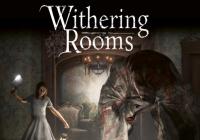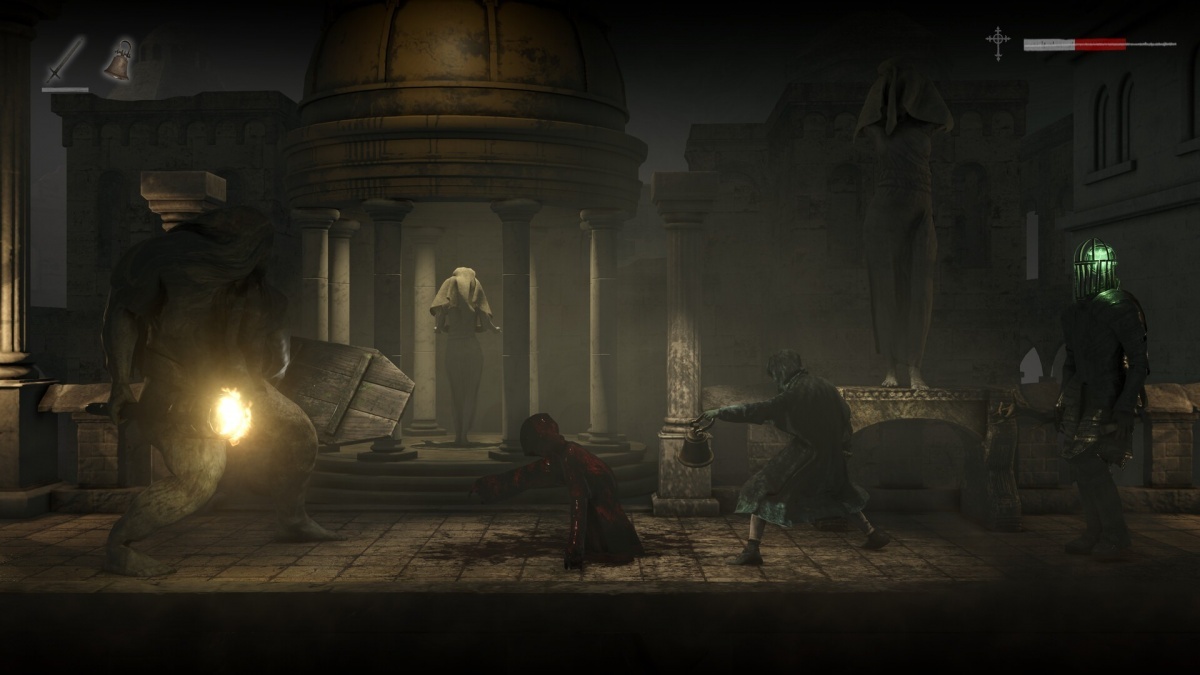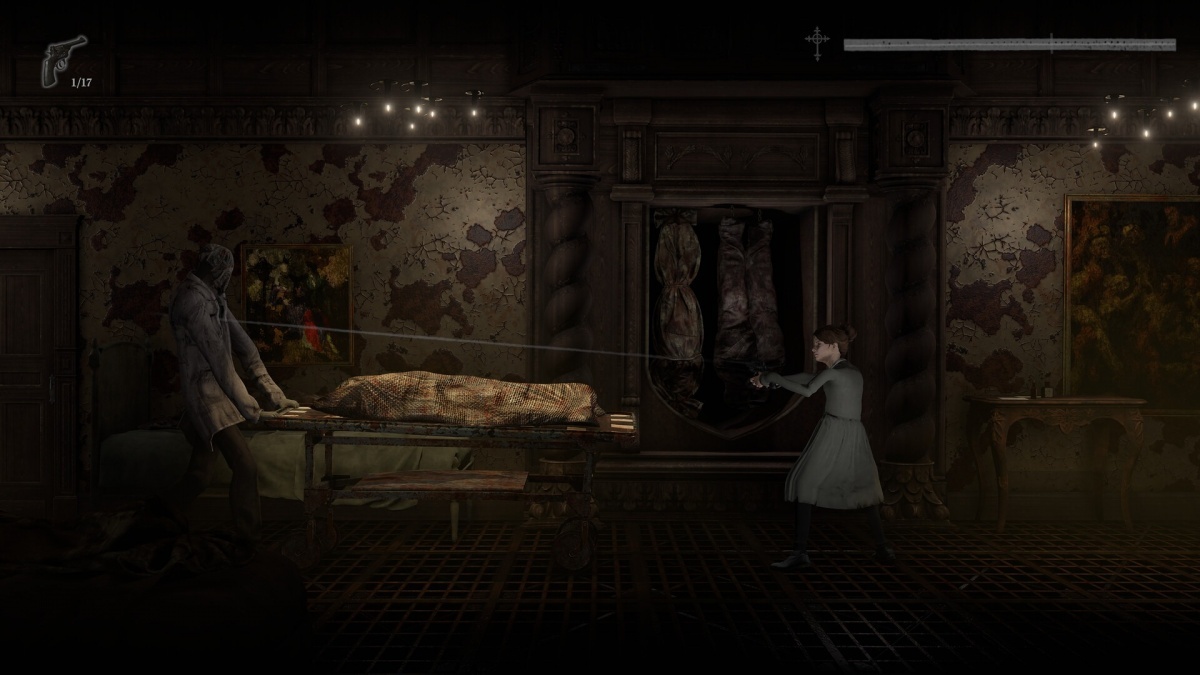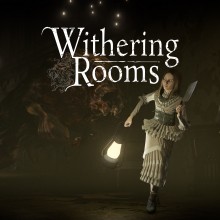Withering Rooms (PlayStation 5) Review
By Coller Entragian  03.04.2025
03.04.2025

This influence of Dark Souls has been particularly noticeable among independent developers. The core tenets of its design philosophy have been adapted and reinterpreted for 2D titles, creating a subgenre known as "soulslikes." Games like Hollow Knight, Dead Cells, and Death's Gambit exemplify the flexibility of this subgenre, incorporating elements from rogue-likes and Metroidvanias into the core soulslike formula. Moonless Formless' unique approach within the soulslike genre draws inspiration from Bloodborne's emphasis on cosmic horror, witchcraft, stealth, and sanity. Can this approach work in two dimensions?
Withering Rooms is a 2.5D horror RPG that plunges players into a disorienting dreamscape. The narrative revolves around themes of mystery, witchcraft, and psychological torment. Players take on the role of Nightingale, trapped within a shared dream realm housed in the enigmatic Mostyn House in Wales. The objective is straightforward: survive within the dream.
However, death in Withering Rooms presents a unique twist. Each time Nightingale falls, she reawakens, only to find Mostyn House's layout reshuffled. This mechanic evokes a nightmarish Alice in Wonderland experience, drawing inspiration from titles like Rule of Rose, Clock Tower, and Bloodborne.
The narrative, though fragmented, explores the concept of shared dreams among female patients. Characters are manifested according to their own self-perception, creating a layer of ambiguity. This dreamlike quality, however, can make it difficult to discern the true nature of events and hinders emotional investment.

Despite the obscurity, character vignettes offer moments of connection. Aiding the dilettante tracker and his dog, for instance, unlocks the ability to acquire rare items. These interactions provide glimpses of personality and motivation within the enigmatic dreamscape. Withering Rooms presents a unique blend of challenging narrative introduction and deeply engaging gameplay. While the story may initially be difficult to connect with, the core mechanics offer a surprisingly rich experience.
It may seem like straightforward 2.5D exploration and combat, but Withering Rooms boasts a complex RPG system beneath the surface. Nightingale, the protagonist, progresses not through traditional experience points, but by acquiring specific items to trade for stat upgrades. Items are obtained through exploration, combat rewards, or fallen foes. However, a key element adds tension: upon death (and the mansion reshuffle), Nightingale loses all carried items. To mitigate this, players can unlock the ability to "remember" specific items, effectively creating a unique stat focused on item carryover.

Withering Rooms fosters a sense of constant advancement. Players can grind for body parts to level up via offerings, gather materials for crafting spells, or strategically prepare for dangers lurking in the hedge maze. This emphasis on creative problem solving through a robust item system evokes the spirit of classic immersive sims. While stats like strength and vitality are clear in function, some offer more nuanced strategic value. Speed may increase attack animation speed, but maximizing curse tolerance is arguably most important. High curse tolerance allows Nightingale to endure the "insanity effects" triggered by curses. These effects can be visually disturbing, but also unlock new areas and portals, adding to the overall horror experience. Some may find these effects entertaining; however, curse buildup can also inflict damage and eventually kill Nightingale.
The tense atmosphere is a balancing act between character stats and challenging scenarios. Stealth mechanics, while occasionally hampered by AI bugs, contribute to this tension. Environmental objects can be utilised for hiding places, to deploy traps, or manipulate enemies to fight each other. Combat is described as basic, similar to 2D versions of early Soulsborne games. Nightingale is inherently weak in close combat due to her being a little girl, but strategic builds and equipment can turn her into a formidable force. Mastering dodge timing for invincibility frames is crucial in encounters with larger enemies.

Withering Rooms offers a surprisingly expansive experience. What initially appears to be nearing a climax is only the halfway point, with a new area and era introducing fresh challenges. Players encounter new enemy types and entirely different weapon categories, such as firearms, which have unique mechanics compared to melee weapons.
The rogue-lite elements lose their impact over time. Nightingale's ability to remember items and money mitigates the punishment for death, reducing tension in later stages. Additionally, the procedural room generation in the 2D environment becomes predictable, creating a repetitive experience that feels like padding. Despite these shortcomings, several aspects of Withering Rooms remain strong. Enemies defeated in a run permanently die, streamlining exploration on successful attempts. While the insanity mechanic primarily serves as flavour text, it unlocks fast travel at higher curse levels, adding a strategic layer. The puzzles are well designed, and there is the option to bypass them with consumable items.

Cubed3 Rating
Very Good - Bronze Award

Withering Rooms boasts a surprising amount of content, rivalling some AAA titles. Players will encounter a variety of outfits, weapons, enemies, and challenging boss battles, offering a high value proposition. For fans of Bloodborne seeking a 2D action RPG with a focus on witchcraft, Withering Rooms provides a compelling experience despite its uneven rogue-lite mechanics.

![]() 7/10
7/10
![]() 0
(0 Votes)
0
(0 Votes)
 Out now
Out now  Out now
Out now  Out now
Out now  Out now
Out now Comments
Comments are currently disabled

 Sign In
Sign In Game Details
Game Details Subscribe to this topic
Subscribe to this topic Features
Features






 Top
Top

